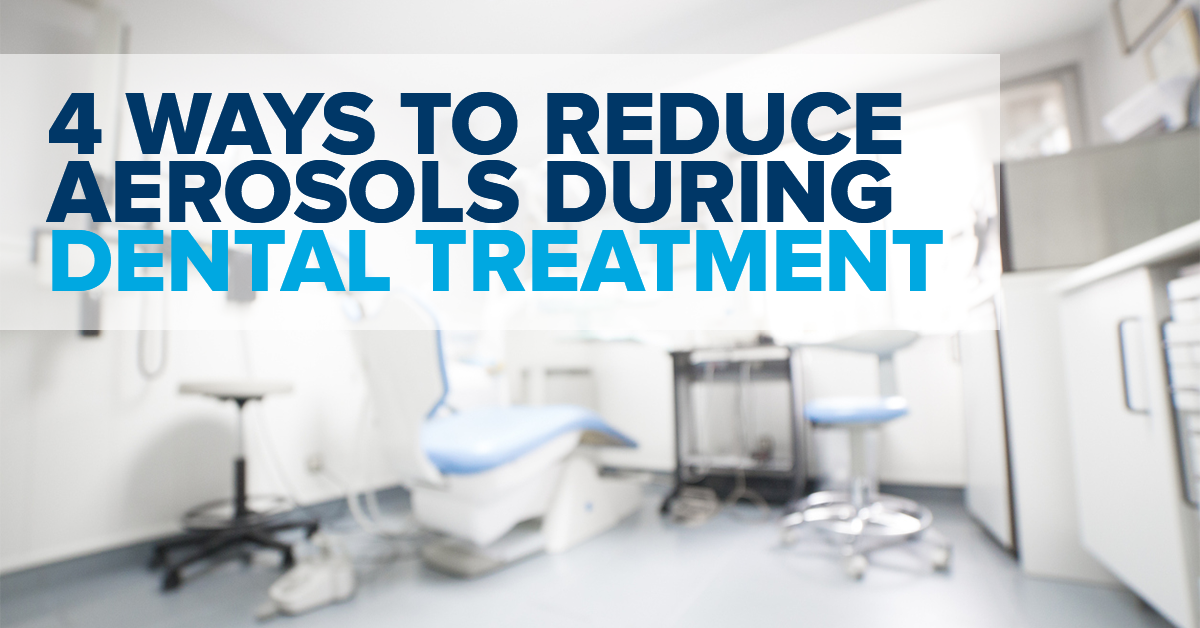As we reenter the practice world, one question dominates every conversation. How do we best reduce the aerosol generated during dental treatment? Let’s jump right in and look at four ways you can keep you, your team and your patients safe.
First, let’s go ahead and bring old school full circle and reenter, the rubber dam. On the restorative side of our practices, placement of a rubber dam is fast, efficient and very cost effective. It’s a team sport so placement can be performed by anyone on the clinical team. If you haven’t used a rubber dam in a while, the materials have changed dramatically so the days of easy tears are over. It’s also far more versatile than we’ve given it credit. In fact, we use rubber dams for just about every restorative procedure that involves natural dentition.
Oh, I know what you’re thinking: “What about crown preparations?” My advice: place your rubber dam as you usually would. Prepare to the level of the dam. That’s about 90% of the job. For a more thorough look at placing a rubber dam, watch my video on rubber dam usage in dentistry after COVID-19.
Second, if the rubber dam isn’t your thing or we’re talking hygiene, bring in HVE (High Volume Evacuation). There are multiple companies like Isolite and Dry Shield that transform our ability to reduce aerosol while helping us isolate our field. Traditionally, these systems are mobile from treatment room to treatment room. In our current practice environment, I’d highly recommend HVE set ups in each of your treatment rooms. Their big-picture cost is nominal; their application is phenomenal. We’ve been using HVE for restorative and hygiene in our practice for a decade now. As a result, we have been far more productive and far more predictable.
Third, and this is a new addition to most practices, enter extra oral suction. These units have medical grade high-efficiency particulate air (HEPA) filtration to capture and filter everything we are concerned with: aerosol, droplets and airborne contaminants. Bonus, they’re hands free. Translation, we can do what we’ve always done and easily add extra oral suction without wondering how we’re going to juggle more armamentarium. Lastly, like the HVE systems we discussed, extra oral suction units are mobile. However, just like I recommend a set up in each treatment room for said HVE systems, I highly recommend a set up for each treatment room for oral suction units. I don’t have to explain why we’re doing all this in our practices today. You are already acutely aware.
Fourth, yet not last by a long shot, air purifiers. Per above, I’m quite sure you’ve read the Centers for Disease Control and Prevention (CDC) guidelines to protect our patients and our teams. With that, I am always in search of best practices to deliver, practically. Air purifiers are designed to trap airborne pathogens anywhere in our practice. The best purifiers combine multi-stage medical and lab-grade HEPA filtration with high-volume airflow (or high cubic feet per minute, CFM) as they constantly scrub air of any biological hazard.
As you assess this option the questions I’d ask are:
- How big is my facility?
- How open or closed is my facility?
- Where will my patients and team spend time?
With those answers, you’ll find your best option as air purifiers can be room based OR installed overhead and out of sight behind most standard-sized fluorescent or LED lighting.
It’s so great to reenter and get back to practicing dentistry. I truly hope these four ways to reduce aerosol in your practice help guide you, your teams and your patients to a safe place.
About the author

David R. Rice, DDS, is the founder of the nation’s largest student and new dentist community, igniteDDS. Dr. Rice travels the world speaking and connecting today’s top young dentists with tomorrow’s most successful dental practices. In addition to igniteDDS, Dr. Rice maintains a team-centered restorative and implant practice in East Amherst, N.Y.
– – –
Want to print this post? Download the image-free PDF.




You must be logged in to post a comment.